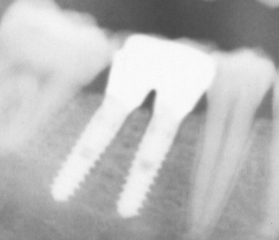Definition:
Dupuytren’s contracture is a painless thickening and contracture of tissue beneath the skin on the palm of the hand and fingers.
...CLICK & SEE THE PICTURES
It is a disease of the palmar fascia (thin but tough layer of fibrous tissue between the skin of the palm and the underlying flexor tendons of the fingers) resulting in progressive thickening and contracture of fibrous bands on the palmar surface of the hand and fingers. Fasciitis implies inflammation of the fascia, and contracture implies thickening and tightening of the diseased fascia. Basically, the tissue on the palm side of the hand thickens (can become as thick as 0.5cm) and essentially “shrinks” and produces a tightness in the area of the hand which the diseased tissue overlies. It occurs most often in the fourth and fifth digits (ring and small fingers). It is a very common problem and often arises in the hands of middle aged persons; however, it can be seen as early as the twenties. This entity does run in families in some cases. It is seven times more common in men than women. It has been associated with diabetes and can be seen in alcoholics with cirrhosis of the liver. It has also been associated with epilepsy but may be a result of the use of anticonvulsant drugs rather than the presence of epilepsy itself. The underlying cause is unknown.
You may click to see the picture
Dupuytren contracture varies in its rate of progression from minor skin puckering for many years to rapid contracture (fixed flexed position) of fingers.
People of northern European descent are more often affected and it can run in families. Men are affected more often than women and the condition is most likely to occur over the age of 40.
Causes:
The cause is unknown, but minor injury and your genes may make you more likely to develop this condition. It can run in families. It’s not caused by a person’s type of job or work environment, manual work or vibrating tools.
One or both hands may be affected. The ring finger is affected most often, followed by the little, middle, and index fingers.
A small, painless nodule develops in the connective tissue on the palm side of the hand and eventually develops into a cord-like band. In severe cases, it’s difficult or even impossible to extend the fingers.
The condition becomes more common after the age of 40. Men are affected more often than women. Risk factors are alcoholism, epilepsy, pulmonary tuberculosis, diabetes, and liver disease.
Symptoms:
Dupuytren contracture initially may cause only a minor painless lump in the palm of the hand near the base of the finger(s). Dupuytren contracture most commonly affects the ring (fourth) finger, but it can affect any and all fingers.Pain and the position of the fingers may make it difficult to perform everyday activities with the hand.The appearance of the deformity can cause distress.Dupuytren contracture can also affect one or both hands.
Dupuytren contracture is seldom associated with much, if any, pain unless the affected fingers are inadvertently forcefully hyperextended.
The ring finger is affected most often, although any finger can be involved. In 50 per cent of cases both hands are affected. It can affect the toes and soles of the feet, but this is rare.
Diagnosis:
Dupuytren’s contracture is diagnosed by the doctor during the physical examination of the affected hand.
A physical examination of the palm by touch (palpation) confirms the presence of thickened scar tissue (fibrosis) and contracture. Restriction of motion is common.
Previous burns or hand injury can lead to scar formation in the palm of the hand which can mimic true Dupuytren contracture.
Treatment:
Often, treatment isn’t needed if the symptoms are mild. Exercises, warm water baths, or splints may be helpful.
If normal hand function is affected, surgery is usually recommended to release the contracture and improve the hand’s function.
There are three main surgical options:
•Open fasciotomy – opening the skin and cutting the thickened tissue
•Needle fasciotomy – pushing a needle through the skin to cut the thickened tissue
•Open fasciectomy – cutting open the skin and removing the thickened tissue
Prognosis: The disorder progresses at an unpredictable rate. Surgical treatment can usually restore normal movement to the fingers. The disease can recur following surgery in some cases.
Prevention:
Since the precise cause of Dupuytren’s contracture is unknown, it’s difficult to prevent.
Awareness of risk factors may allow early detection and treatment.
Avoiding excessive intake of alcohol may help to reduce the risk of it developing in susceptible individuals.
Disclaimer: This information is not meant to be a substitute for professional medical advise or help. It is always best to consult with a Physician about serious health concerns. This information is in no way intended to diagnose or prescribe remedies.This is purely for educational purpose.
Resources:
http://www.bbc.co.uk/health/physical_health/conditions/dupuytrens1.shtml
http://www.med.und.edu/users/jwhiting/dupdef.html
http://www.nlm.nih.gov/medlineplus/ency/article/001233.htm
http://www.medicinenet.com/dupuytren_contracture/article.htm
http://www.prlog.org/10501551-who-first-described-dupuytrens-contracture.html
Related articles
- Bent and Locked Fingers? Is it Dupuytren’s Contracture? (bodyquirks.wordpress.com)
- How Dupuytren’s Contracture Progresses (arthritis.webmd.com)
- Dupuytren’s Contracture: Causes and Risk Factors (arthritis.webmd.com)
- Dupuytren’s Contracture: It Brings a Polish Family Together (annapalooza.net)
- Xiapex(R) (Collagenase Clostridium Histolyticum), First Injectable Treatment Indicated For Dupuytren’s Contracture, Launched In UK (medicalnewstoday.com)
- Pfizer Inc. Announces Approval of XIAPEX(R) for Treatment of Dupuytren’s Contracture in Europe (biospace.com)
- Sudden Curvature of the Penis? (everydayhealth.com)
- Repetitive Motion: Trigger Finger on the Rise (bodyquirks.wordpress.com)
- Xiapex(R) (Collagenase Clostridium Histolyticum) Authorised In The European Union (EU) For Dupuytren’s Contracture (medicalnewstoday.com)




![Reblog this post [with Zemanta]](https://i0.wp.com/img.zemanta.com/reblog_e.png?w=580)



















